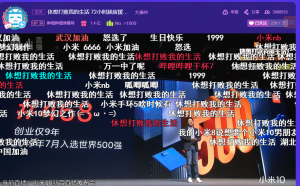
BEN’s Ricky Ray Butler and Nancy Lewis
Branded Entertainment Network (BEN) Group, formerly known as Corbis, recently announced plans to open an office in Shanghai later this year, applying its product placement experience in Hollywood and expertise in artificial intelligence to improve brand integrations in China’s vibrant entertainment and social media markets.
BEN has come a long way being founded in 1989 by Bill Gates as Corbis Images, with an early focus on image and video licensing. Spun off and sold to Visual China Group in 2016 and rebranded as Branded Entertainment Network, BEN today is chiefly the product of two key acquisitions made over the past decade. Product placement specialist Norm Marshall Associates was acquired in 2012, followed three years later by AI-driven influencer marketing firm Plaid Social Labs, founded by current BEN CEO, Ricky Ray Butler. (Another division, Greenlight, offers rights clearance and licensing services for iconic celebrities.) BEN boasts extensive relationships with more than 90 percent of Hollywood productions and leading influencers, and has been sought after by multinational clients such as Disney, Procter & Gamble, General Motors, and (not surprisingly) Microsoft.
BEN’s success on its home turf inspired the expansion into China, following several years of planning and contemplation. The private company reported a 58 percent increase in revenue in the first half of 2019 over the same period in 2018, and BEN is on track to reach a target of 10,000 brand integrations for 2019, a 40 percent increase from 2018. Meanwhile, China’s influencer market has leapfrogged that of the U.S., vastly outpacing it in both size and sophistication.
CEO Butler and Nancy Lewis, Manager of Client Service and Strategic Partnerships, answered questions from CBI about the big move into China. Below are their lightly edited responses:
What are some of the factors driving the decision to open an office in China at this time?
Ricky Ray Butler: Today’s digital entertainment now touches all corners of the globe. In China specifically, digital video platforms like iQiyi and Youku are expanding among paid subscribers seeking ad-free entertainment experiences. As audiences turn to these new platforms over traditional forms of entertainment, product placement and brand integration are essential tactics for brands to reach audiences without 30-second spots. Throughout recent years, we’ve also seen the power of China’s influencers and KOLs [key opinion leaders] alongside the growing popularity of social platforms, such as Weibo, Douyin, Little Red Book [Xiaohongshu], and Bilibili.
In order to provide effective integrations with global reach for our clients, BEN needs to be at the center of the evolving Chinese market — opening an office in Shanghai allows us to further our understanding of China’s unique influencer landscape and consumer expectations.
Prior to opening this office in Shanghai, what has BEN’s experience been with the Chinese entertainment market?
Butler: BEN has had success working with China-based companies such as Lenovo for global content integration in the past years. We also service tech giants Bytedance and Tencent in expanding their market overseas via content integration.
What are some key differences between how product placement and brand integrations work in China versus the United States?
Nancy Lewis: Chinese viewers are particularly perceptive of disruptive integrations. In influencer marketing specifically, audiences are seeking authenticity over forced sponsored content. A major trend shaping Chinese marketing is the integration of online stores directly on social media platforms such as WeChat. With more mature mobile payment systems and online wallets, Chinese consumers can now easily access the products they see influencers use and buy directly on mobile devices. This trend is only set to continue in China — according to the International Trade Administration, 85 percent of all online shopping will be done on mobile devices by 2020. Brands must reach this mobile-only audience through the content they are consuming across multiple platforms.
What are the specific challenges involved in executing brand integrations in China?
Lewis: As the advertising industry in China continues to grow, many challenges can come with expansion. For international brands, establishing a genuine understanding and connection with Chinese audiences is a top priority, starting with communicating directly with viewers in their own language (especially on social media platforms) and tapping into the influencers that are driving results — not just those with international celebrity status.
The evolving Chinese Advertising Law, internet censorship and short video standards may seem daunting to brands. By inserting ourselves directly into the Chinese market, BEN can navigate these laws for our clients, creating successful integrations.
Bots and fake views are something can be costly for brands in KOL marketing. BEN wants to utilize our AI technology to select and execute the most efficient campaigns that will generate the highest ROI for our clients.
What is the level of interest among BEN’s clients in working with Chinese entertainment?
Butler: China is one of the world’s largest advertising markets. In order to get in front of Chinese audiences, brands need to experiment with different channels and types of integrations across social media platforms. In 2019, there are approximately one billion social media users in China, producing an influential audience with buying power. Connecting with this audience in an authentic way directly through the content they are consuming strengthens recognition as brands enter the market.
Are there any areas of Chinese entertainment that BEN’s clients are especially keen on?
Lewis: Our clients are particularly interested in social media apps such as WeChat and Weibo, the vast Chinese esports community on streaming platforms like Huya, and partnering with top KOLs and growing micro-influencers across these channels to reach audiences.






